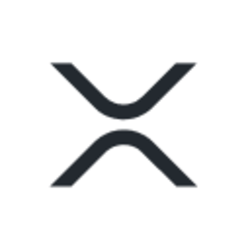-
XRP has surged to become one of the largest assets globally, surpassing major corporations with a remarkable market capitalization milestone.
-
Following a significant 71.6% monthly increase, XRP now ranks as the 91st largest asset worldwide, outpacing firms like PepsiCo, AT&T, and Uber.
-
According to Matej Janež from Oasis, while XRP’s market cap reflects strong speculative interest, it differs fundamentally from public company valuations due to the absence of legal claims on earnings.
XRP’s market cap surpasses major global companies after a 71.6% rise, highlighting its growing influence in the crypto space and potential to enter the top 10 assets.
XRP’s Market Capitalization Surpasses Major Global Corporations
XRP’s recent performance has propelled it beyond some of the world’s most recognized companies, marking a significant milestone in the cryptocurrency sector. With a market capitalization of $203.89 billion, XRP now ranks as the 91st largest asset globally, according to InfiniteMarketCap. This surge is largely attributed to a 71.6% increase in value over the past month, as reported by CoinGecko. Notably, XRP has overtaken established firms such as PepsiCo, AT&T, and Uber, signaling its expanding footprint in the financial landscape.
Comparative Analysis: XRP Versus Traditional Assets
When compared to other leading cryptocurrencies, XRP holds a prominent position as the third-largest digital asset. Ethereum ranks 29th globally, ahead of companies like Costco and Johnson & Johnson, while Bitcoin stands as the 6th largest asset, positioned between Amazon and Alphabet. Despite these impressive standings, experts caution against equating cryptocurrency market caps directly with those of public companies. Matej Janež, Head of Partnerships at Oasis, emphasizes that public company valuations include shares conferring legal claims on earnings and assets, whereas crypto market caps are derived from token price multiplied by circulating supply, reflecting speculative demand without enforceable rights.
Legal Challenges and Regulatory Environment Impacting XRP’s Growth
XRP’s ascent follows the resolution of a protracted legal dispute with the U.S. Securities and Exchange Commission (SEC), which accused Ripple and its executives of selling unregistered securities. The conclusion of this five-year battle has alleviated significant regulatory uncertainty, contributing to renewed investor confidence. Ripple CEO Brad Garlinghouse declared the legal issues largely resolved in March, notwithstanding a remaining $125 million penalty. The easing of regulatory scrutiny under the current U.S. administration has further bolstered XRP’s market position, facilitating its recent price rally.
Investor Sentiment and Future Prospects for XRP
Investor enthusiasm remains high, with members of the XRP Army, such as the pseudonymous MackAttackXRP, expressing strong belief in the cryptocurrency’s potential to disrupt traditional financial systems. Advocates highlight XRP’s low transaction fees and rapid processing speeds as key advantages that could enable it to become a global transactional standard. While breaking into the top 10 assets would require a substantial 735% price increase, XRP’s near-term goals appear more attainable, needing only a 5% rise to surpass companies like McDonald’s, Shell, and American Express.
Conclusion
XRP’s remarkable growth and market capitalization milestone underscore its rising prominence in both the cryptocurrency ecosystem and the broader financial market. While regulatory clarity and investor confidence have played pivotal roles in its ascent, the distinction between crypto and traditional asset valuations remains critical. As XRP continues to challenge established corporations, its trajectory will be closely watched by investors and industry observers alike, reflecting the evolving dynamics of digital assets in the global economy.
